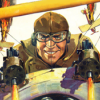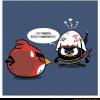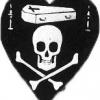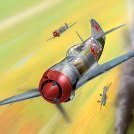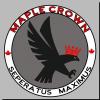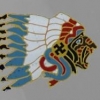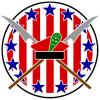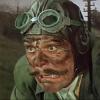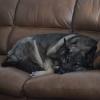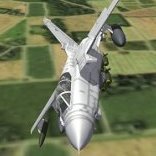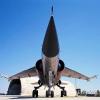Leaderboard
Popular Content
Showing most liked content on 02/25/2018 in Posts
-
11 points
-
10 points
-
9 points
-
6 pointsVonS' previous atmospherics look spectacular over any game map in FE2, so his new atmospherics should also work well in SF2. Everybody wins.
-
6 pointsSuccessful incorporation of screen text display mods and environsys ini tweaks for wind, clouds, etc., from FE2, including fog effects, into SF2. Will include directions with a ver. 9.5 of the FM update pack for FE2 - for those interested in using the FE2 atmospherics in SF2. The MiG-23 is the standard "MS" extract from SF2 by the way (with avionics downgraded to avionics60.dll for more limitation and fun, and Stary's lovely improved cockpit installed) - will eventually get around to installing the huge 2-pack of Floggers available for SF2. Thank you modders! Obligatory screenies below. Happy flying, Von S
-
4 points
-
4 pointsI redrew the stock record screen into a picture. What do you think, gents?
-
4 points
-
3 pointsMcDonnell Douglas F-110E Phantom - 555th TFS, United States Air Force, 1975 The resounding success of the US Navy's F-4B in the competitive fly-off against the F-106 during ‘Operation Highspeed’ led to a more comprehensive evaluation of two loaned Navy F-4B’s (designated as the F-110A) but McDonnell had already been planning a purpose-built tactical fighter version of the F-4 for the USAF with manual terrain-following radar and TF30 turbofan engines. Designated F-110B this aircraft promised to be an excellent partner to the F-111A (TFX) and quickly gained the support of Defense Secretary Robert McNamara who authorised production of the type in February 1962. The pre-production prototype first flew in November 1963 and the F-110B entered service during the following year before production switched to the improved F-110C for TAC and the F-110D interceptor for ADC. In 1969 the definitive F-110E started to roll off the St. Louis production line which matched the AN/APG-59 pulse doppler radar coupled with the AN/AWG-10 Fire Control System for look-down shoot-down capability. The F-110E also featured the substantially more powerful TF30-P-100 turbofan rated at 25,000 lbs thrust each and was far less prone to compressor stalls at high angles of attack than previous versions of the TF30. Initial production aircraft were delivered to USAFE in 1970 but soon began to replace F-105D's and F-110B's in Vietnam from 1971 onwards.
-
3 pointsGterl's map and VonS' atmospherics look so good that I tried them out with my old CR42 and Gladiator.
-
3 points
-
2 points
-
2 pointsThings like this will always happen. !!!! It will continue as long as there are issues which need to be debated and some people who do not want to debate issues like gun laws. We all have different views and some want to discuss them openly whilst others can't see the others viewpoint and simply try to shut down any argument by censorship............. It's not fair but it happens. !!
-
2 pointsBelow are two experimental screens for the Pfalz D8. If they survive the testing process, They'll become the templates for other aircraft.
-
2 points
-
2 points
-
2 points
-
2 points
-
This post cannot be displayed because it is in a password protected forum. Enter Password
-
1 point
-
1 pointView File Cockpit for the SPAD 7 This cockpit will repace the SPAD 13 cockpit used until now to make the stock SPAD 7 into a flyable plane. I can't find out who first converted the stock SPAD 7 into a flyable plane by using the cockpit from the SPAD 13. It seems to have been done several times over the years. The most recent version I could find was by Sinbad in 2012. I have used parts of the cockpits I made for the SPAD 11, SPAD 16, and SPAD A.2 to make a completely new cockpit for the SPAD 7 which fits the fuselage better and has the correct number of guns. The new cockpit features fully functional gauges, throttles, rudder control, and stick. This cockpit should work with all the SPAD 7s (SPAD7_150, SPAD7_180,etc.) NOTE - About 10 years ago, Gr.Viper made a SPAD 7 by converting the SPAD 13. MY cockpit will not work for that version since it uses the SPAD 13 plane with a revised FM. (If your SPAD 7 has two guns on the fuselage, then you are using GR.Viper's conversion and this cockpit won't fit.) Installation Instructions for both FE1 and FE2 Do this for each SPAD 7 you want to convert: If you have already have a flyable SPAD 7 using the SPAD 13 cockpit, delete the "cockpit" folder if it exists, and delete the SPAD7_COCKPIT.ini file. Then open my "SPAD_7" folder and place all the files - 1 folder and 1 ini file - into your folder. If you still have the stock version, Open my "SPAD_7" folder and place all the files - 1 folder and 1 ini file - into your folder. You will also have to add the following line to the plane's ini file. CockpitDataFile=SPAD7_cockpit.ini Submitter Stephen1918 Submitted 02/25/2018 Category First Eagles - WWI and Early Years - Add On Cockpits
-
1 pointI re-did all VAW-115 skins on templates so they are more good looking now and i also finished VAW-113. Will make a few final checks tonight. For the VAW-115, my 1991 skin is in fact one of 2003. My 2000's one are 2005 and 2007 so a version 2.0 of this pack will come. Will do a quick pack for the Desert Storm Hawkeyes with proper serials and Modex for all Squadrons involved
-
1 pointThe base was Incirlik,where the 7440th Composite Provisional Wing was based;I will suggest also King Abdul Aziz AB,Saudi Arabia,where the Marines based the the OV-10A/D of VMO-1 and -2 and the AV-8B of VMA-311 and a det from another Harrier squadron ( don't remember actually). Gianni
-
1 pointView File Suez '56 Redux Plus Suez '56 Upgrade One of my favorite campaign ever. A Sea Venom & Canberra festival! Added: - Sea Venom - by Veltro2k from Venom 21/22 pack - - Hunter F5 (TW) - Redone - - Canberra B2 (TW) - from my own pack - - Canberra B6 (TW) - New - - Historical Serial Numbers; - Medals (by Captain Vengeur ?) - Loading Screen; - Stock Kadesh '56 Campaign Upgraded (Fly Them All!) - No. 13/15 Squadrons RAF bug - Fixed To install: - InstalI 48-56 Exp.1 Redux Here: - Delete All previous SeaVenom; Hunter5/F5; CanberraB2/6 - Overwrite new planes files That's all! Enjoy @ paulopanz Submitter paulopanz Submitted 02/25/2018 Category User Made Campaigns
-
1 point
-
1 point
-
1 pointMcDonnell Douglas F-110E Phantom - 555th Tactical Fighter Squadron, Udorn RTAFB, Thailand, 1975
-
1 pointWell, it seems, this is just that very case when the game engine shows to the modders an obscene gesture... Now, after many hours of experiments, I'm almost certain that the banner at the airfield and the pennants on the airplane struts - is not the same thing at all )) In my spare time I will try to attach the streamer tapes into the LOD of any additionon airplane. It is interesting to see what will come of it. Of course, commander's pennants are just an ornament that does not bring anything new to the gameplay. Unfortunately, it's impossible to teach AI to mark the enemy FLT Leaders with a ribbons.
-
1 point
-
This post cannot be displayed because it is in a password protected forum. Enter Password
-
This post cannot be displayed because it is in a password protected forum. Enter Password
-
1 point
-
1 point
-
1 point
-
1 point
-
1 pointHawker Siddeley Harrier Mk.51 - People's Liberation Army Air Force, 1976 Interest in the Hawker P.1127 programme surged after the 1967 Six-Day War and whilst most interest faded within a few months the Chinese government kept an official observer status on the project until 1972 when they signed up for 60 Harrier Mk.51 aircraft. Apart from the PLAAF's genuine interest in the aircraft it was also clearly a political deal that saw the Chinese government officially recognise the British government's position on Hong Kong who, in turn, acknowledged China's position on Taiwan (albeit whilst not agreeing to it). The Chinese government also received permission to licence build the aircraft with the Shenyang Aircraft Corporation building a further 200 Harrier Mk.52's.
-
1 point
-
1 point
-
1 pointI really hope flightsimlabs gets sued. What they did was very unethical and illegal. I'm a software developer myself and I know piracy is a problem, but I would never ever install malware on my customers computers. And even if the malware was targeted only at pirates, thats not the point. It's illegal. Period! The companys CEO even doesn't see the problem. He appologized not because he has done something unethical and illegal but because some customers may have been offended. I would never trust this guy. It seems he was also involved in the "PMDG MD-11 drm destroys fsx installation" stuff.
-
1 pointLooks like SHIFT+ESC will be my favourite combo on this map ;-)
-
1 pointand Kuwaiti single-seaters (based on A-4K-model with ini-edits and additional/corrected stuff)
-
1 pointThe F-16XL was a design named after………..a golf ball………..that being the Top Flite XL for any who ever played Golf. Harry Hillaker was also a golfer….one with a problem in that the USAF wanted to use his A-A fighter (F-16A) in an A-G role, hanging lots of pods and bombs off it, which was just not on! So, what did he do and why? He and his design team at General Dynamics redesigned the F-16 to be more suitable to an A-G role using such concepts as high internal fuel loads and conformal carriage of weapons to get that nasty drag and radar cross section right down. In fact when he first started going to the Air Force with plans for the XL they were so enthusiastic about it they apparently accused him of holding the design back so that they (General Dynamics) could sell the F-16 twice. Goals to improve operational effectiveness included: • Improve the A-G role without degrading A-A capability. • Increased survivability, though increased speed, manoeuvrability and low radar cross section. The idea was to replace the F-16 and remain a lower cost fighter to the high cost F-15. So, some concept demonstrators were knocked together for testing? Yes, two of the Full Scale Development (Block Zero) F-16s were converted by doing such things as stretching their fuselages, removing the ventral strakes and gluing on some new cranked delta wings or double deltas. F-16XL-1 was 75-749 and had the F100-PW-200 engine, and F-16XL-2 was 75-747 which started life as single seater but was converted to the XL as a duel seater with the higher thrust F110-GE-100 engine. Were the goals met? Most of them, the low drag weapons carriage and lots of internal fuel meant vastly improved range over the F-16A (that already had comparative long legs), carried more A-G weapons, with ability to lug along 6 x A-A missiles on top. High AoA handling and instantaneous turn was improved. Cruise speed was also improved. This is a part of a 1989 write up by General Dynamics test pilot Joe Bill Dryden: Pitch rate in all configurations was as good as to slightly better than a Block 10 A model (No slouch in itself) and the roll response was better. On several occasions, during demonstrations with VIPs, I had to remind them that we had 12 MK82s on the airplane! They would frequently forget because of the ease with which the airplane would attain high airspeed…….How high an airspeed? Mull this over for a while, you put 6 MK82s on your little airplane, plus tanks and try to get close to my radius. ill put 12 x MK82s on board with no tanks, still go further than you can and for the same fuel flow by going 60 to 80 knots faster than you. I risk going in to the classified arena, but with the right fuses on the bombs you could get well on the plus side of the Mach, all the while enjoying a much better ride. Is there a but here? Yes using the F100-PW-200 engine from the F-16A, it was a tad underpowered, more F-14A than F-16A………..so take off requirements were nowhere near and some of it’s A-A capability was a bit degraded you could say. Perhaps an example from one of the Red Eagles pilots who flew some BFM against it in a MiG-21F-13: [Red Eagle Matheny flying the MiG] “We briefed each other about our airplanes and they [Edwards F-16XL pilots] turned to me and said they would be all over me – they had a roll rate of 800 degrees per second, which was the fastest in the inventory. – I got to thinking about that and it turned out the roll rate meant nothing. The problem with that airplane[F-16XL] was that it was a big bleeder: it just bled speed like nothing else when forced to turn hard – I ate them alive in the MiG-21. The F-15E on the other hand was a pretty good performer – they resisted the urge to get slow and jump in a phone booth with a MiG. They flew around the ranges at low level trying to burn off all this gas and he still needed to burn off more when we joined up on each other”. Could they not have improved that somewhere? Potentially, the second F-16XL had higher thrust F110-GE-100 engine but unfortunately the majority of the evaluation data and the Dual Role Fighter evaluation was done with the lesser thrusted F-100-PW-200. In fact Harry Hillaker stated they were not allowed to use the GE engine in the evaluation (see below) for whatever reason. NASA later got it supercruising with a F-100-GE-129 (29,500 lbs class), and by the late 1990s both General Electric and Pratt & Whitney offered suitable engines with a potential max thrust class to 36,000lbs and 37,000 lbs respectively. Was there some competition against the F-15 at some point? There was a USAF competitive evaluation originally called the Enhanced Tactical Fighter (ETF) competition, which in 1981 was renamed to became the Dual Role Fighter (DRF) competition. Technically not really a competition because both were evaluated and flight tested to totally different sets of conditions and to different flight test plans it seems. Why did the USAF run this evaluation? It was felt by some in the USAF the F-111F was becoming a bit outdated and instead of just an upgrade they wanted something that had A-A capability and a good precision night strike role against the Soviet masses. So, they chose two short assed fighters to replace the F-111? Pretty much – they would both get LANTIRN eventually and have a good A-A capability but still lacking in range. Surely the F-16 was cheaper was it not? On unit cost and cost per flight hour yes – but the USAF considered the F-16XL a radical new airframe compared to the F-15E, which was considered just a modification, so the USAF estimated research and development cost would be higher for the F-16XL. Okay but in the end the F-15 was chosen as the winner and that was that. No – following the DRF decision that the F-15E was going into production in February 1984, the USAF announced its intention to put the Single seat F-16XL into production anyway with the designation F-16F. So, work began on the F-16F design concept and Full Scale development into 1985. So where is it then? The program was terminated in late 1985 by the USAF it later appears there was no budget for every program out there such as the ATF (F-22) and black projects such as F-117 that were unknowns to most who ran the DRF so sadly the F-16F had to take the chop - basically lack of funding finally killed it off. End of the F-16XL – not quite The two F-16XLs were given to NASA in the late 1980s for various types of flight testing and we can thank them for taking some time to research into the history of the F-16XL and providing useful information on it. But there’s more An interesting rebuttal, ten years after the DRF, written by Harry Hillaker in response to an article in Aerotech News and Review which perhaps gives a passionate and better insight into how farcical some of these things can be: As the recognized “Father of the F-16,” and Chief Project Engineer during the concept formulation and preliminary design phases of the F-16XL and Vice President and Deputy Program Director during the prototype phase, the article was of considerable interest to me. The disappointment was that only one side of the issue was presented, a highly biased, self-interest input that does not adequately, nor accurately, present the real story of the selection of the F-15E. First, it should be understood that we (General Dynamics) did not initiate the F-16XL as a competitor to the F-15E, then identified as the F-15 Strike Eagle. We stated as unequivocally as possible to the Air Force, that the Dual-Role mission should be given to the F-15: that the F-15 should complement the F-16 in ground strike missions in the same manner that the F-16 complements the F-15 in air-air missions. A fundamental tenet of the F-16, from its inception, has been as an air-air complement to the F-15—no radar missile capability, no M=2.0+ capability, no standoff capability: a multi-mission fighter whose primary mission was air-surface with backup air-air capability. We proposed the F-16XL as a logical enhancement of its air-to-surface capabilities. The F-16C represented a progressive systems enhancement and the XL would be an airframe enhancement optimized more to its air-surface mission—lower weapons carriage drag and minimum dependence on external fuel tanks. The statement that “a prototype version of the F-15E decisively beat an F-16 variant called the F-16XL,” is misinformation. I don’t know what was meant by “beat,” it is patently true that McDonnell-Douglas clearly won what was called a “competition.” However, by the Air Force’s own definition, it was, in reality, an evaluation to determine which airplane would be better suited to the dual-role mission. In a formal competition, each party is evaluated against a common set of requirements and conditions. Such was not the case for the dual-role fighter. The F-15 Strike Eagle and the F-16XL were evaluated and flight tested to different sets of conditions and to different test plans—no common basis for evaluation existed. The F-15 had only one clear advantage in the evaluation—a “paper” advantage. The weapon loading for one of the missions used in the evaluation precluded the use of external fuel tanks on the F-16XL; the F-15 could carry that particular weapon loading and still carry external fuel tanks, the F-16XL could not. That one mission was the only place the F-15 had a clear advantage. (It should be noted that a fundamental design feature of the XL was the elimination of external fuel tanks with their attendant restrictions on flight limits and their weight and drag penalty.) Further, the Air Force would not allow us to use the GE F110 engine in our proposal even though the No. 2 XL, the 2-place version, was powered by a F110 engine and provided better performance than the P&W F100 engine. And although you would expect the F-16’s clear advantage to be cost, the Air Force treated the F-15E as a simple modification to a planned production buy and the F-16XL as a totally new buy. Neither airplane used in the flight test evaluation was a “prototype” of a dual-role fighter. The F-15 was closer systems and cockpit-wise than the F-16XL and the F-16XL was closer, much closer, airframe-wise. The F-16XLs were designed to, and flew, at their maximum design gross weight of 48,000 pounds, whereas the F-15, more than once, blew its tires while taxiing at 73,000 pounds, well below its maximum design gross weight [which was 81,000 pounds], a condition not demonstrated in the flight test program. In a meeting that I attended with General Creech, then TAC CINC [Commander-in-Chief], the general stated that either air¬plane was fully satisfactory. When asked why he and his staff only mentioned the F-15 (never the F-16XL) in any dual-role fighter statement or discussion, he gave a reply that was impossible to refute, “We have to do that because the F-16 has a heart and soul of its own and we have to sell the F-15.” I’ll have to admit that I sat mute upon hearing that statement because there was no possible retort. We had no allusions as to what the outcome of the Dual-role fighter “competition” would be and debated whether to even respond to the request for information. We did submit, knowing full well that it was a lost cause and that to not submit would be an affront to the Air Force who badly needed the appearance of a competition to justify continued procurement of the F-15—they had patently been unable to sell the F-15 Strike Eagle for five years. As is the case with too much in our culture today, the Air Force was more interested in style, in appearances, than in substance. Even today, I feel that giving the F-15 a precision air-surface capability was proper and badly needed. What continues to disturb me is that the F-16XL had to be a pawn in that decision and had to be so badly denigrated to justify the decision—a selection that could have been made on its own merits. And finally The concept of retaining performance with a usable Air to Ground loadout lives on today in the form of the F-35 Lightning II.......which comes with a 43,000 lbs thrust class engine to start with. General Dynamics F-16XL (F2275) ------------------------------------------------------------------------------------------------ Sources Page 267 Red Eagles (Davies.S), Osprey publishing 2008 - Matheny flew the MiG-21F-13 against the F-16XL and F-15E concept demonstrators. Elegance in Flight (Piccirillo.AC), 2014 National Aeronautics and Space Administration (NASA) – Chapter 7: The Dual Role Fighter competition. Code One Magazine, July 1989 (General Dynamics) Vol 4 No 2 -The F-16XL flies again Code One Magazine, July 1991 (General Dynamics) Vol 6 No 2 – Interview with Harry Hillaker 1999 Aviationweek online: http://aviationweek.com/awin/pws-229a-edging-close-500-hours Pratt&Whitney's self-funded F100-PW-229A - a re-fanned F100 fighter engine that can produce as much as 37,150 lbst. - is edging close to 500 total hours of run time 1998 General Electric online: http://www.geaviation.com/press/military/military_19980907.html Designated the F110-GE-129 EFE (Enhanced Fighter Engine), the engine will be qualified at 34,000 pounds of thrust and offered initially at a thrust rating of 32,000 pounds, with demonstrated growth capability to 36,000 pounds.
-
1 pointI'm amazed. While testing the CL4, I blundered into a situation where gterl's superb map and VonS' equally superb atmospherics combine to make this old game engine look like a painting!
-
1 pointVVS Mig-21Bis FAPA jet during Operation Modular SA-3 in Iraq WIP stuff - "Grail" "Gaskin"
-
1 pointJust finished calibration for 2nd method. 30-40k feet, 1,5 and over Ma, retarded nuke. Ofc you must choose way of bombing before take off and load retarded or non-retarded WE-177 .
-
1 pointStarted a camo process on it. Has anyone repainted this yet and done the panel lines over?
Important Information
By using this site, you agree to our Terms of Use, Privacy Policy, and We have placed cookies on your device to help make this website better. You can adjust your cookie settings, otherwise we'll assume you're okay to continue..

